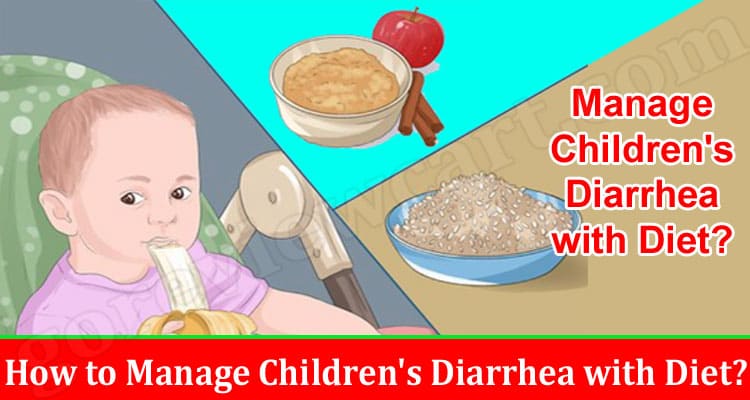How to Manage Children’s Diarrhea with Diet?: There is some confusion about the optimal diet or dietary ingredients for feeding children with diarrhea, despite the fact that current WHO guidelines for managing and treating diarrhea in children strongly recommend continued feeding along with the management of oral rehydration solution and zinc therapy.
There are at least five ways in which diarrhea can lead to or exacerbate protein-energy and micronutrient malnutrition:
- A decrease in food consumption, which may be attributable to the child’s anorexia, the mother’s food-withholding behavior, or both
- Lower nutrient absorption due to intestinal injury and the physical effects of increased bowel movement and decreased fluid transit time.
- Increased catabolic losses due to inflammation,
- Loss of nutrients from the intestinal tract in diarrhea;
- Insufficiency of micronutrients
Why diet is important in diarrhea?
When combined with malnutrition, diarrhea is the leading cause of morbidity in children and is one of the leading causes of mortality in children. Diarrhea is one of the leading causes of childhood mortality in underdeveloped nations. The presence of diarrhea, undernourishment and a lack of intestinal integrity are all linked in a significant way. In children who are generally healthy, intestinal permeability will significantly increase after an episode of acute diarrhea, but it will return to normal within a few weeks.
In children who are malnourished, permeability is persistently elevated, and there is some evidence to suggest that mucosal damage may continue for an extended period of time because the typical repair response to villous atrophy is delayed.
Dietary management during diarrhea
Clinical recommendations for the management of diarrhea stress the importance of moving on with a diet that is somewhat normal during the healing process. Ideally, a child’s diet would provide the essential nutrients a youngster needs to grow and develop normally while also providing the nourishment needed to get through a bout of diarrhea.
The following are examples of such things:
1. Continue breastfeeding
Breastfed infants, meanwhile, should keep nursing even as they get better from diarrhea. Under the age of six months, eutrophic infants can survive on a breastfeeding exclusively diet because it is appropriate for their needs and can remedy any nutritional deficiencies brought on by diarrhea.
For infants older than 6 months, it is recommended to supplement this diet with foods that are generally well tolerated by this age group.
2. The BRAT diet
Bananas, rice, applesauce, toast, and tea make up the B.R.A.T. diet, a popularly recommended eating plan.
This diet involves combining meals that contain dietary fibers with poor nutritional status; yet, these items are expected to be well absorbed by children’s gastrointestinal tracts during episodes of diarrhea.
3. Get Enough Fluids
Children require enough liquids (5-8 drinks a day), but some toddlers want to drink practically constantly, which can lead to dehydration and, in turn, diarrhea. Many times this is done for emotional reasons rather than to quench thirst. You should serve drinks only at scheduled intervals, such as with snacks and meals, and not in between. If you need to, try distracting them. Don’t worry about your kids getting dehydrated; they’ll drink as much as they need to satisfy their thirst.
4. Medicinal Use of Probiotics
Evidence from multiple studies indicates that Lactobacillus spp. benefits the treatment of acute infectious diarrhea, decreasing the duration of the illness.
Moreover, Lactobacillus spp. improved the clinical outcomes of antibiotic-associate Diarrhea.
5. Fibre
Though doctors recommend a high-fiber diet for optimal health, young children frequently have trouble digesting meals with that much fiber. Foods strong in fiber, notably oat-based foods like wheat biscuits, oatmeal, and pancakes, as well as certain fruits and vegetables including grapes, cranberries, chickpeas, sweet corn, and baked beans, are common culprits in the development of loose stools.
Conclusion
Dehydration and poor nutrient digestion in the intestines are key concerns when dealing with acute diarrhea in children. Between the ages of 2 and 5, the majority of instances of diarrhea resolve on their own. If the symptoms are moderate, you may not require any treatment at all. However, if the symptoms are severe, even short-term dietary adjustments may not help. In order to avoid dehydration and any difficulties, you should contact the best Gastroenterologist immediately.
FAQs
1. How do you manage a child with diarrhea?
Diarrhea can be prevented through measures such as access to clean water, the implementation of better sanitation practices, and regular hand washing with soap.
2. Why do kids get diarrhea?
It is right that mostly diarrhea is cause by virus attacking kids. In addition to viruses and viruses, bacteria, parasites, dietary changes (such as drinking too much fruit juice), gastrointestinal issues (such as food allergies), and certain medications can also lead to diarrhea.
3. How long can a child have diarrhea?
When will diarrhea stop? Most cases of diarrhea are mild and only continue for three to six days. It’s not uncommon for a child to have a watery stool for several days after the first episode has subsided.

